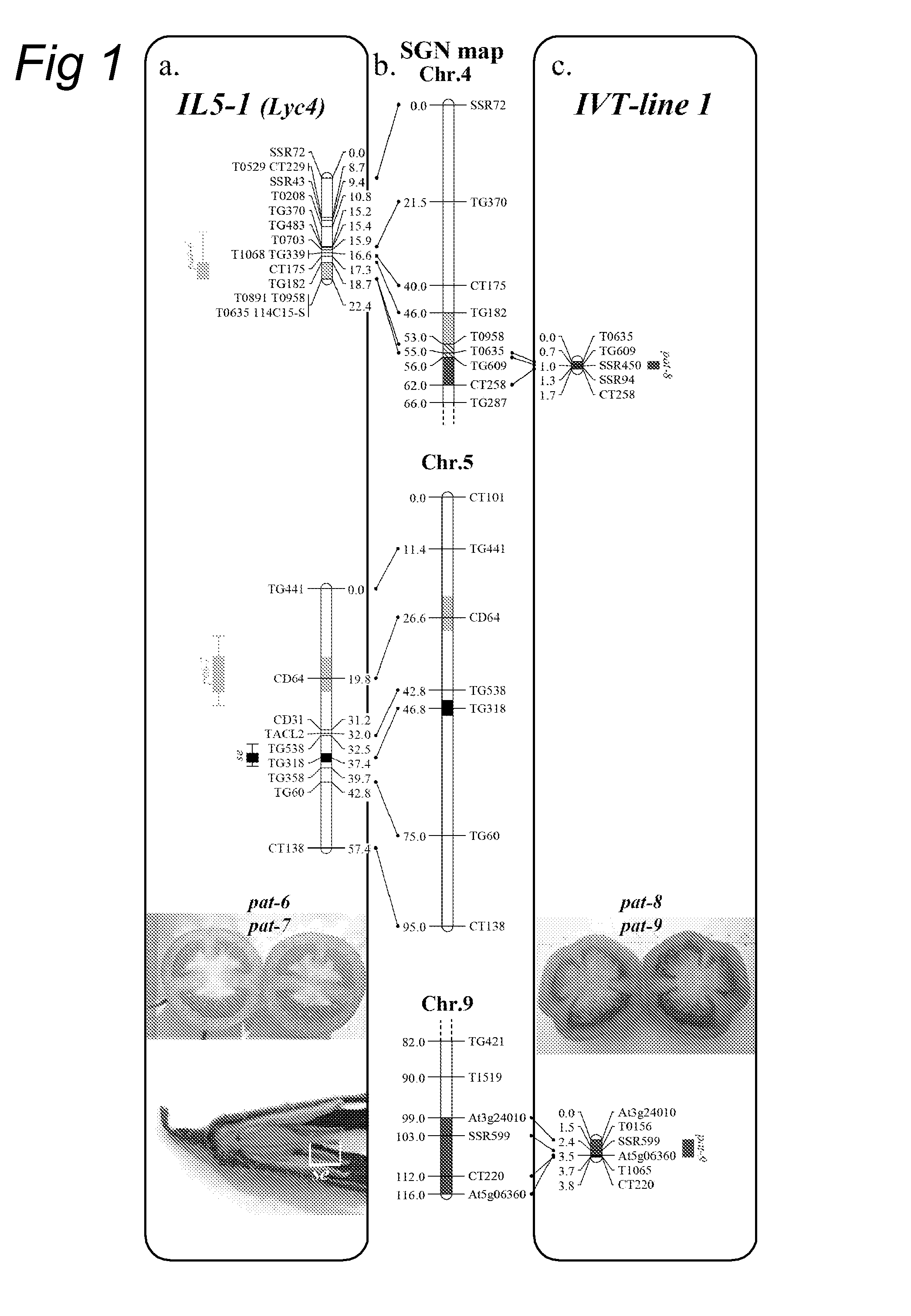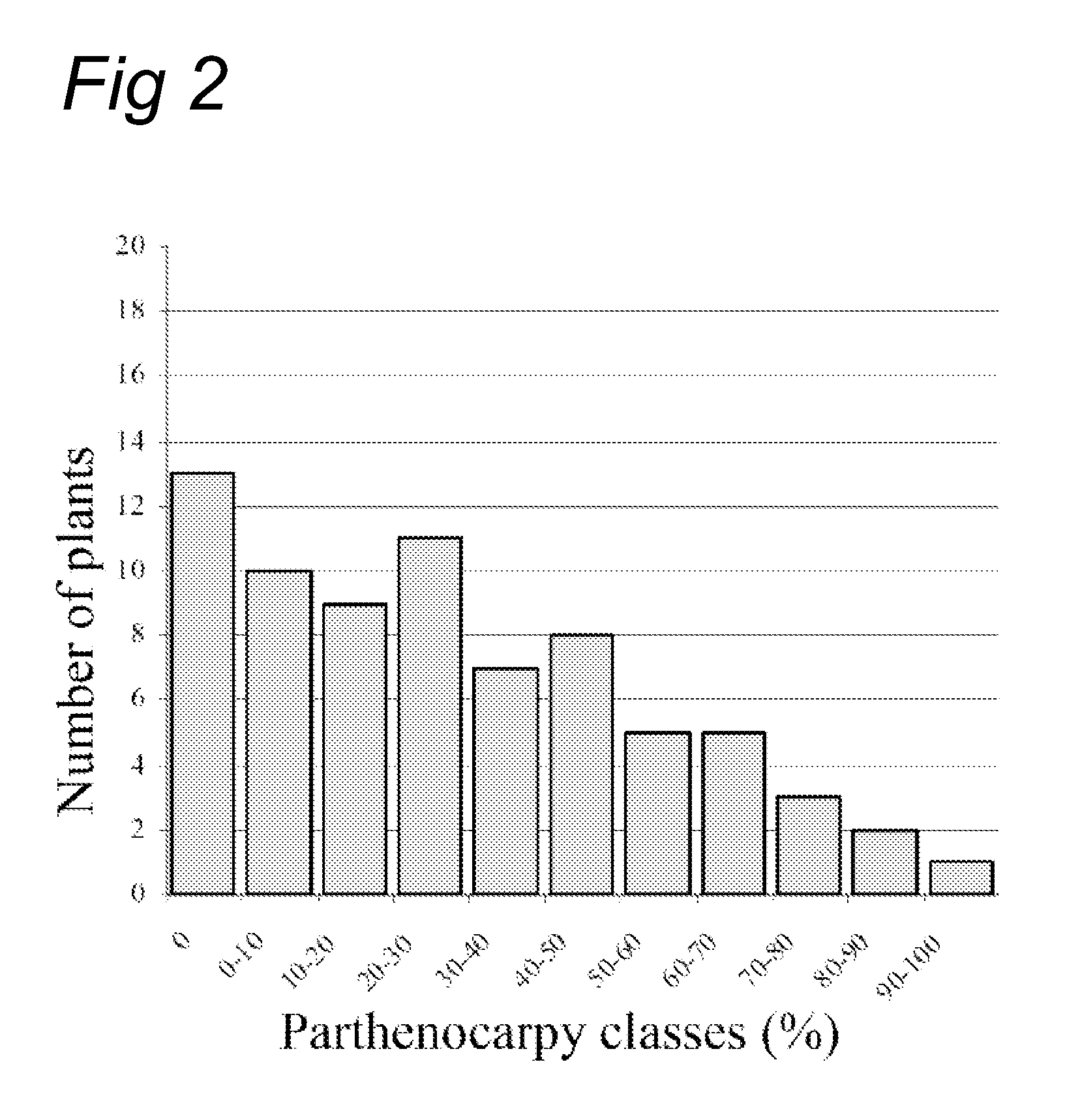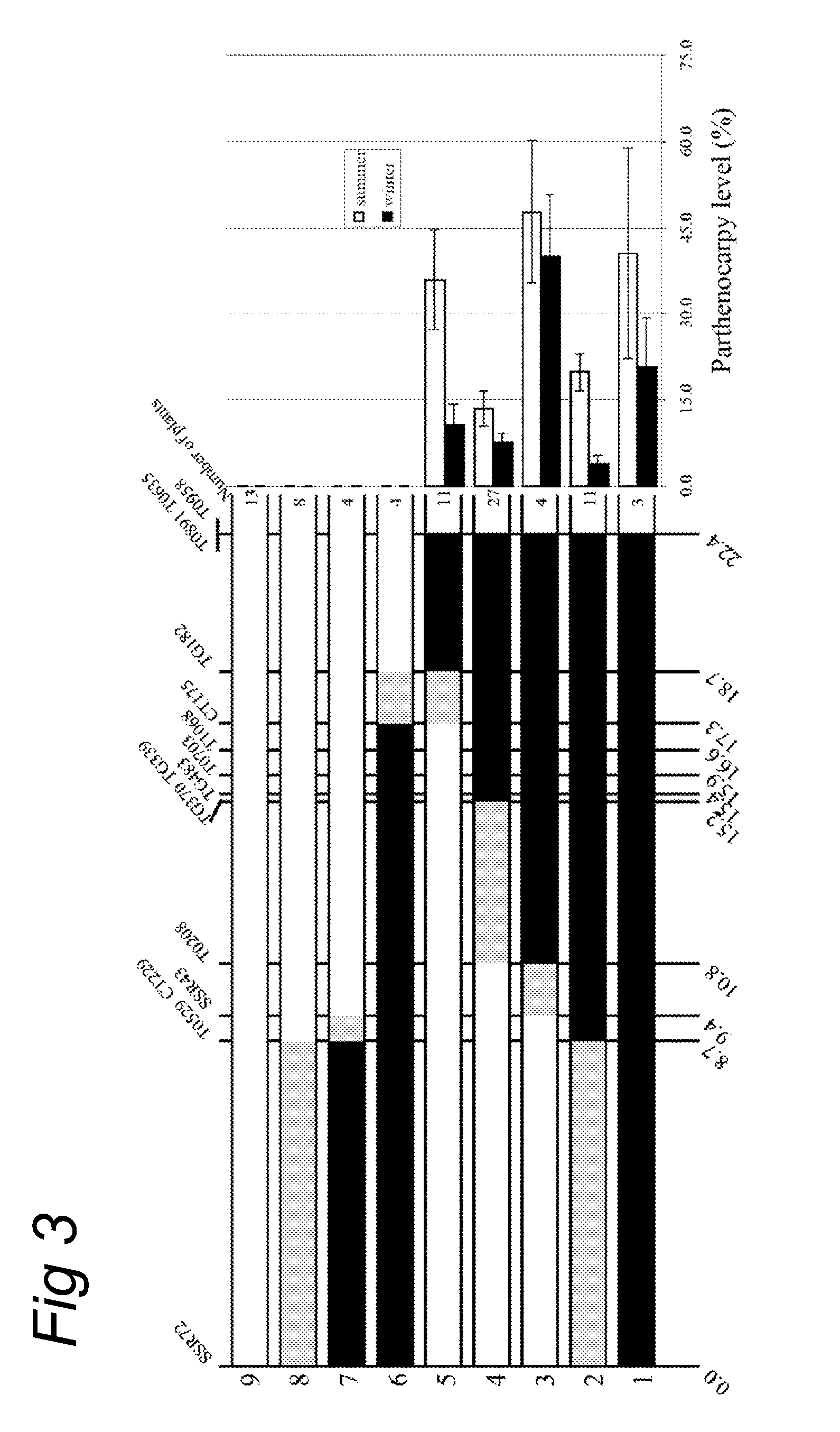Parthenocarpy genes in tomato
- Summary
- Abstract
- Description
- Claims
- Application Information
AI Technical Summary
Benefits of technology
Problems solved by technology
Method used
Image
Examples
examples
1. Materials and Methods
1.1 Plant Materials
[0070]For the mapping of parthenocarpy genes in Solanum habrochaites LYC4, we originally used two BC5S1 populations that were part of the introgression line (IL) development program of Finkers et al. (2007b) (see FIG. 6). These ILs contain chromosome fragment(s) of Solanum habrochaites LYC4, hereafter referred as SH, in a Solanum lycopersicum cv. Moneymaker genetic background, hereafter referred as SL. The two BC5S1 populations had previously been used for the selection of IL 5-1 and IL 5-2 (Finkers et al, 2007b) and will be hereafter denoted as populations 5-1 and 5-2. Population 5-1, segregating for the short arm of Chromosome 4 and the entire Chromosome 5, consisted of 174 plants. Population 5-2, segregating for the long arm of Chromosome 5, was composed of 183 plants. Plants were grown in greenhouse in The Netherlands under controlled conditions. Subsequently a set of relevant BC5S2 recombinant plants were selected and further studied.
[...
PUM
 Login to View More
Login to View More Abstract
Description
Claims
Application Information
 Login to View More
Login to View More - R&D
- Intellectual Property
- Life Sciences
- Materials
- Tech Scout
- Unparalleled Data Quality
- Higher Quality Content
- 60% Fewer Hallucinations
Browse by: Latest US Patents, China's latest patents, Technical Efficacy Thesaurus, Application Domain, Technology Topic, Popular Technical Reports.
© 2025 PatSnap. All rights reserved.Legal|Privacy policy|Modern Slavery Act Transparency Statement|Sitemap|About US| Contact US: help@patsnap.com



